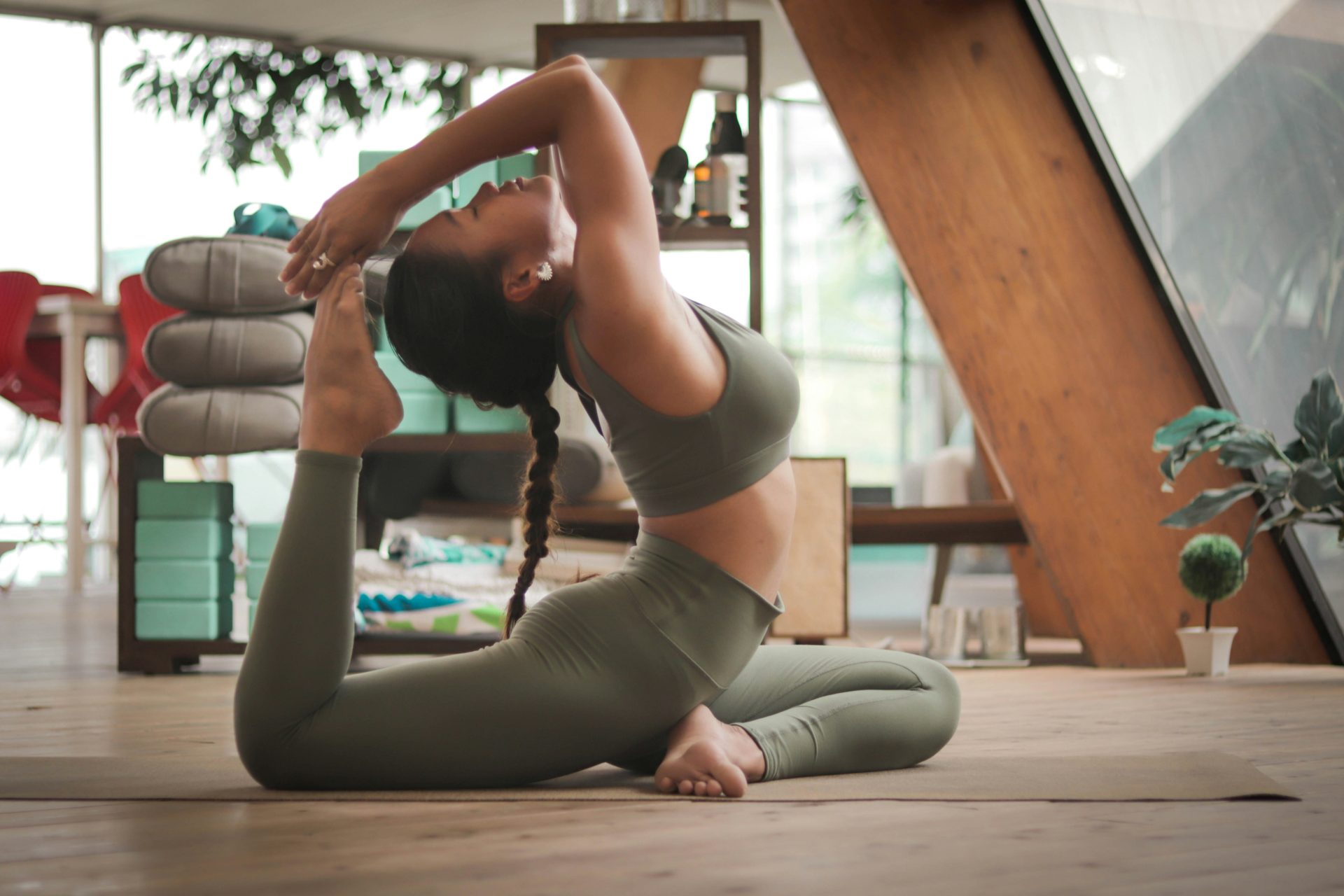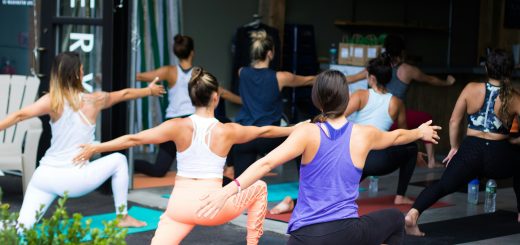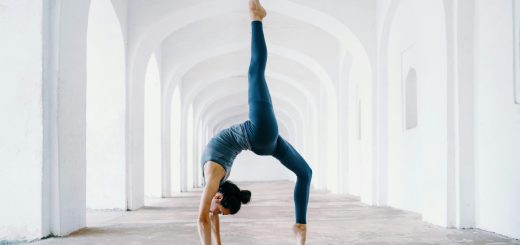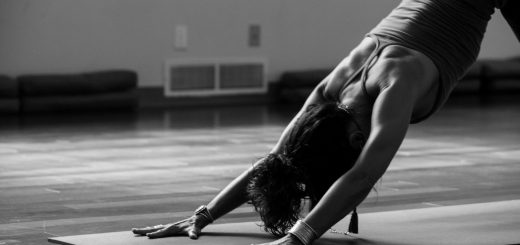How Pilates Strengthens Core Muscles Naturally

Hey there, amazing readers! 🖐️ Just a quick note: yes, we know there are a lot of ads here. Trust us, we get it—it’s not the prettiest look, but they help us keep this blog alive and kicking. Those pesky little ads cover the costs of all the behind-the-scenes magic, from hosting and tech stuff to creating content we hope you’ll love.
We’re committed to delivering quality posts, and your support (even just sticking around despite the ads) means everything to us. So, bear with us, and thanks for helping us keep the good vibes rolling. Now, on to the fun stuff! 😉
TRANSLATE BUTTON AT THE END OF THE ARTICLE
A Quick Overview
Pilates has taken the fitness world by storm, and for good reason.
This workout method not only sculpts the body but also emphasizes one of the most vital aspects of physical health: core strength.
Many people associate core strength with the appearance of six-pack abs, but it’s much more than that.
In this article, we’ll dive into how Pilates naturally strengthens core muscles, making it a fantastic option for anyone looking to improve their overall fitness.
What is Pilates and Why It’s Great for Core Strength?
Pilates is a low-impact workout system developed by Joseph Pilates in the early 20th century.
It focuses on strengthening muscles while improving postural alignment and flexibility.
What I love about Pilates is that it’s accessible to everyone, from beginners to seasoned athletes.
The beauty of Pilates lies in its emphasis on controlled movements.
This attention to detail helps to activate and engage the core muscles effectively.
You might wonder, “What makes it so good for core strength?” It’s all about the focus on the center of your body.
The core isn’t just your abs; it’s a complex network of muscles that stabilizes and supports your entire frame.
When we engage in Pilates, we learn to harness this core energy.
Each exercise encourages proper alignment and muscle engagement, leading to a stronger base for all physical activities.
Plus, because Pilates is low-impact, it’s gentle on the joints while still being challenging.
You can build core strength without the wear and tear that high-impact exercises can cause.
No matter your fitness level or experience, Pilates meets you where you are.
It’s a fantastic way to get in touch with your body.
Trust me, you’ll feel muscles you never knew existed!
Understanding Core Muscles: More Than Just Abs!
Let’s unpack what we mean by “core muscles.” When people talk about core strength, they often jump straight to the abdominal muscles.
However, the core includes:
Rectus Abdominis (the "six-pack")
Transverse Abdominis (the deep core stabilizer)
Internal and External Obliques (sides of the abdomen)
Erector Spinae (muscles along the spine)
Diaphragm (involved in breathing)
Pelvic Floor Muscles (support the pelvis)
All these muscles work together to provide stability and support, not just during workouts but in our daily lives.
Think about it—every time you bend down to tie your shoes or twist to grab something off a shelf, you rely on these core muscles.
A strong core contributes to better posture, reducing the risk of back pain.
I remember when I had terrible back issues from poor posture at my desk job.
Once I started focusing on my core through Pilates, everything changed.
It’s amazing how interconnected our bodies are.
The takeaway?
Strong core muscles enhance your ability to perform daily tasks, improve athletic performance, and prevent injuries.
So, if you think core strength is just about aesthetics, think again!
The Science Behind Core Strength and Stability
Core stability is crucial for maintaining balance and proper body mechanics.
When your core is weak, it can lead to compensatory movements, placing stress on other parts of the body.
This is where Pilates shines!
Research shows that engaging the core during physical activities improves overall movement efficiency.
A study published in the Journal of Sports Medicine found that Pilates significantly enhances muscle activation in the core, leading to improved stability when performing activities.
Pilates also encourages proprioception—your body’s ability to sense its position in space.
By focusing on mindful movements, you develop a better awareness of how your body moves.
This awareness is essential for athletes and everyday individuals alike.
Additionally, a strong core can reduce the risk of injuries.
Core stability supports the spine and pelvis during dynamic movements, meaning you’re less likely to strain something.
In short, the science backs it up: engaging and strengthening the core is vital for overall stability, injury prevention, and enhanced physical performance.
With Pilates, you’re not just sweating; you’re investing in your body’s long-term health.
How Pilates Engages the Core Muscles Effectively
So, how does Pilates engage the core?
The key lies in the principles of Pilates: concentration, control, centering, flow, precision, and breathing.
Concentration: Each movement requires focus.
You’re not just going through the motions; you’re aware of what each muscle is doing.
Control: Movements in Pilates are slow and controlled.
This encourages engagement of the core rather than relying on momentum.
Centering: Pilates emphasizes returning to your core as the center of all movement.
This principle is literally at the heart of the method!
Flow: Exercises flow into one another, maintaining engagement throughout the routine.
This keeps your core muscles activated.
Precision: Each movement is purposeful.
You can’t just flail about; precision is critical for effectiveness.
Breathing: Breathing techniques help with muscle engagement and relaxation.
It teaches you how to use your breath to support your movements.
When you engage your core in this way, you’re activating more than just the muscle groups.
You’re improving coordination and balance while building a mind-body connection that enhances each workout.
Key Pilates Exercises for Strengthening Your Core
Let’s talk about some specific Pilates exercises that really target the core muscles.
Here are a few favorites that I’ve found beneficial:
The Hundred: This exercise warms up your body while engaging your core.
It’s a classic starter for any Pilates session.
Roll Up: This one challenges your abdominal muscles, helping to strengthen the rectus abdominis and improve spinal articulation.
Single Leg Circles: Not only does this work your core, but it also enhances hip mobility.
It’s a great multi-tasking exercise!
Plank: A staple in many workouts, the plank is fantastic for building core strength.
In Pilates, you can modify it to target various muscles.
Teaser: This is a more advanced move that truly showcases core strength.
It’s a fun challenge that pays off!
Criss-Cross: This one engages your obliques while also working on flexibility.
It’s a dynamic exercise that keeps your heart rate up.
Swan Dive: A great way to strengthen your back while engaging the core.
This counterbalances the flexion from most core exercises.
Side Leg Lifts: This exercise targets the obliques while also working on hip strength.
It’s perfect for building lateral stability.
Bridge: A fantastic way to engage the pelvic floor and glutes while focusing on core activation.
Corkscrew: A challenging move that targets the obliques.
It’s a great way to finish off your core workout!
Each of these exercises can be modified to suit your fitness level.
As you progress, you can increase the intensity to continue challenging yourself.
The Benefits of a Strong Core for Everyday Life
Having a strong core is like having a solid foundation for a house.
It supports everything else!
Here are some benefits you might notice in daily life:
Better Posture: A strong core supports proper alignment, which means you’ll stand taller and feel more confident.
Reduced Back Pain: Strengthening your core can alleviate strain on your lower back, preventing nagging discomfort.
Improved Balance: Whether you’re walking or running, a strong core enhances stability, helping you stay on your feet.
Enhanced Athletic Performance: If you play sports, a strong core improves your power and endurance.
You’ll notice a difference in your game!
Easier Daily Activities: Lifting, bending, and twisting become easier when your core is strong.
Think about how much easier it is to carry groceries!
Increased Flexibility: Core work helps improve your range of motion, contributing to overall flexibility.
Better Breathing: Strong core muscles support the diaphragm, leading to improved breathing efficiency.
Injury Prevention: A well-conditioned core helps protect your spine and muscles from injury during physical activities.
Weight Management: Engaging your core can aid in weight loss by increasing muscle mass and metabolism.
Mental Clarity: The mind-body connection fostered by Pilates can lead to better focus and reduced stress.
With all these benefits, it’s easy to see why focusing on core strength is so crucial!
Pilates vs. Other Core Strengthening Techniques
You might wonder how Pilates stacks up against other methods for building core strength.
Here’s what I’ve discovered:
Traditional Weightlifting: While effective, weightlifting often focuses on specific muscle groups rather than the entire core.
Pilates offers a more holistic approach.
Yoga: Both Pilates and yoga emphasize core strength, but Pilates tends to focus more on muscle control and alignment, while yoga emphasizes flexibility and mindfulness.
High-Intensity Interval Training (HIIT): HIIT can build core strength but often at the expense of form and control.
Pilates promotes precision, making it a safer option for many.
Cardio Activities: Running, cycling, and other cardio workouts can be great for fitness, but they don’t specifically strengthen the core like Pilates does.
Physical Therapy: Pilates is often used in rehabilitation settings because it emphasizes controlled movements, making it suitable for injury recovery.
In summary, while there are various options available, Pilates offers a unique blend of strength, flexibility, and stability training that few methods can match.
The Role of Breath in Pilates Core Exercises
You might not think about it, but breath is a huge component of Pilates.
The way you breathe affects your muscle engagement and overall performance.
Here’s how it works:
Breathing Techniques: Inhale deeply through the nose and exhale through the mouth.
This pattern encourages muscle activation and relaxation.
Engaging the Diaphragm: Proper breathing helps engage your diaphragm, providing better core support.
Rhythmic Breathing: Each exercise has its own breathing rhythm, helping you sync movement with breath.
This connection enhances efficiency.
Reducing Tension: Controlled breathing can help release tension in your body, making movements feel smoother.
Mindfulness: Focusing on your breath fosters a deeper mind-body connection, improving your overall Pilates experience.
The next time you practice Pilates, pay attention to your breath.
You might be surprised at how it transforms your workout!
How to Start Your Pilates Journey at Home
Ready to dive into Pilates?
Starting at home can be a rewarding experience.
Here’s how you can get going:
Do Your Research: Look for reputable resources, whether that’s books, online videos, or apps.
Find a style that resonates with you.
Invest in a Mat: A quality Pilates mat is essential.
It provides cushioning and support for your movements.
Start Slow: Don’t rush into advanced exercises.
Begin with foundational movements to build your strength and confidence.
Join Online Classes: Many studios offer virtual classes.
This can provide structure and motivation.
Listen to Your Body: Pay attention to how your body responds to each exercise.
Modify or skip anything that feels uncomfortable.
Track Your Progress: Keep a journal of your workouts and how you feel.
This can help you stay motivated.
Create a Routine: Consistency is key!
Aim for several sessions a week, even if they’re short.
Stay Patient: Building core strength takes time.
Celebrate your progress and stay committed!
Connect with Others: If possible, find a Pilates community online or locally.
Having support can make the journey more enjoyable.
Have Fun: Remember, Pilates is meant to be enjoyable!
Experiment with different exercises and approaches to find what you love.
Tips for Maintaining Core Strength Beyond Pilates
Once you achieve your core strength goals, you’ll want to maintain them.
Here are some tips to keep those muscles engaged:
Incorporate Core Work into Daily Life: Simple adjustments like standing tall while waiting in line can engage your core.
Mix It Up: Try different forms of exercise, like yoga, cycling, or swimming.
Variety keeps things interesting!
Set Goals: Whether it’s achieving a new Pilates move or participating in a sport, having goals keeps you motivated.
Stay Active: Regular movement is key.
Even short bursts of activity throughout the day can help maintain core strength.
Nutrition Matters: Eating a balanced diet supports muscle health.
Pay attention to protein intake for recovery.
Hydrate: Staying hydrated is crucial for overall health and performance.
Practice Mindfulness: Continue to focus on your breathing and body awareness, even outside of Pilates.
Work on Flexibility: Stretching can enhance your overall fitness and prevent tightness, aiding core strength.
Rest and Recover: Don’t underestimate the importance of rest!
Your muscles need downtime to rebuild and grow stronger.
Celebrate Achievements: Acknowledge your progress and accomplishments, no matter how small.
It keeps motivation high!
Common Mistakes to Avoid in Pilates Practice
Like any workout, it’s easy to fall into some traps while practicing Pilates.
Here are common mistakes to steer clear of:
Holding Your Breath: Forgetting to breathe properly can lead to tension and reduced effectiveness.
Rushing Movements: Pilates is about control.
Speeding through exercises can diminish their benefits.
Poor Form: Always prioritize form over quantity.
Misalignment can lead to injury.
Ignoring Modifications: If an exercise feels too challenging, don’t hesitate to modify it.
It’s okay to start where you are!
Neglecting the Mind-Body Connection: Pilates is as much about the mind as it is about the body.
Stay focused on your movements.
Skipping Warm-Up and Cool-Down: Warming up prepares your body, while cooling down aids recovery.
Overdoing It: Rest is essential.
Listen to your body and allow for recovery days.
Getting Stuck in a Routine: While consistency is important, don’t be afraid to try new exercises or classes.
Setting Unrealistic Expectations: Building core strength takes time.
Be patient with yourself!
Forgetting to Enjoy It: Remember to have fun!
If you’re not enjoying yourself, it’s time to switch things up.
Conclusion: Embrace Pilates for a Stronger Core!
In conclusion, Pilates is a fantastic way to strengthen your core naturally.
It’s all about controlled movements, breath, and finding that mind-body connection.
With a strong core, you’ll notice improvements in your posture, balance, and overall physical performance.
Whether you’re a seasoned athlete or just starting out, Pilates offers something for everyone.
So roll out that mat, start moving, and see how strong you can become!
Your core will thank you.
Embrace the journey, have fun, and remember: every little step counts towards becoming your best self!

The Enlightenment Journey is a remarkable collection of writings authored by a distinguished group of experts in the fields of spirituality, new age, and esoteric knowledge.
This anthology features a diverse assembly of well-experienced authors who bring their profound insights and credible perspectives to the forefront.
Each contributor possesses a wealth of knowledge and wisdom, making them authorities in their respective domains.
Together, they offer readers a transformative journey into the realms of spiritual growth, self-discovery, and esoteric enlightenment.
The Enlightenment Journey is a testament to the collective expertise of these luminaries, providing readers with a rich tapestry of ideas and information to illuminate their spiritual path.
Our Diverse Expertise 🌟
While our primary focus is on spirituality and esotericism, we are equally passionate about exploring a wide range of other topics and niches 🌍📚. Our experienced team is dedicated to delivering high-quality, informative content across various subjects ✨.
To ensure we provide the most accurate and valuable insights, we collaborate with trusted experts in their respective domains 🧑🏫👩🏫. This allows us to offer well-rounded perspectives and knowledge to our readers.
Our blog originally focused on spirituality and metaphysics, but we’ve since expanded to cover a wide range of niches. Don’t worry—we continue to publish a lot of articles on spirituality! Frequently visit our blog to explore our diverse content and stay tuned for more insightful reads.






